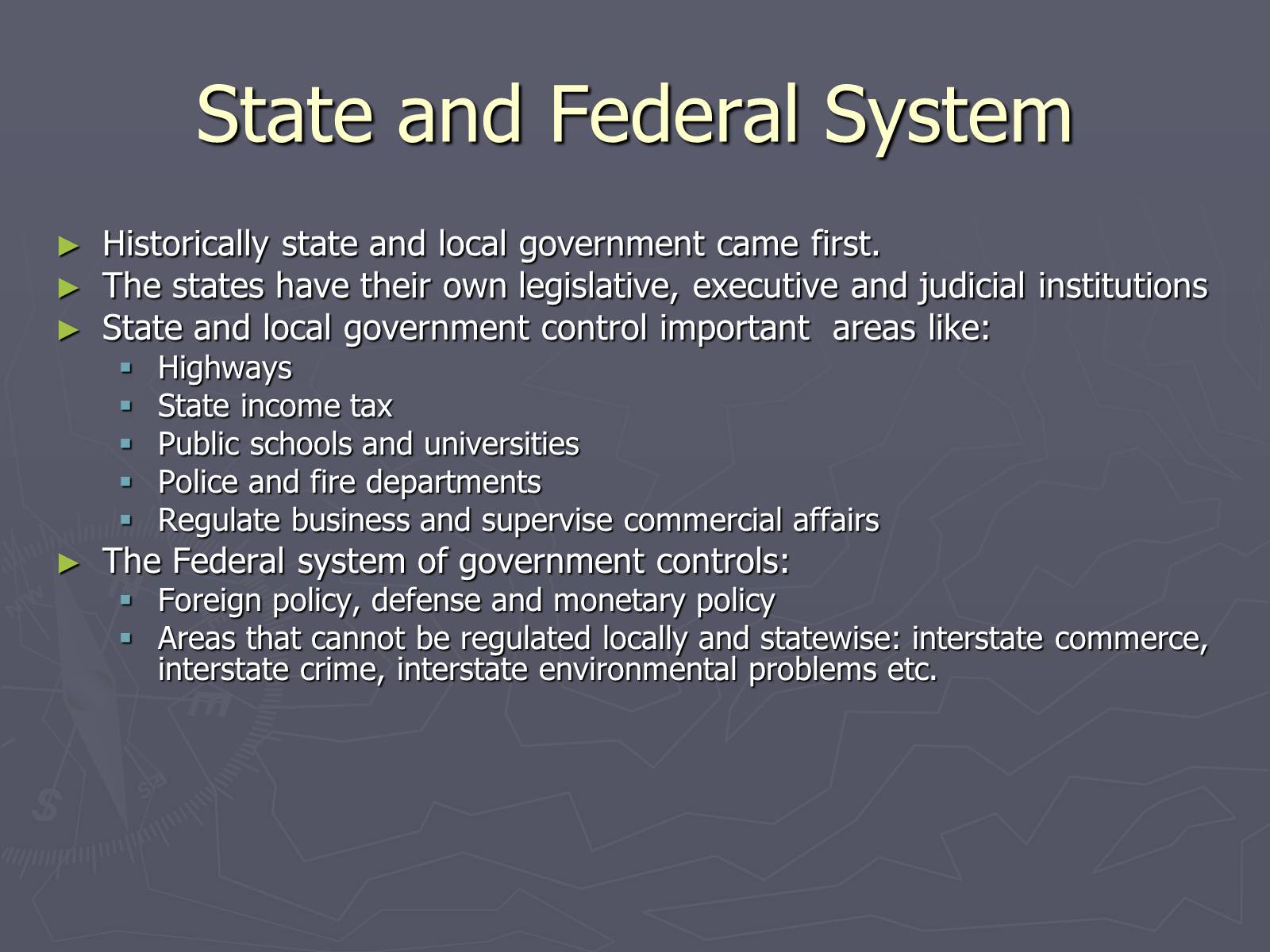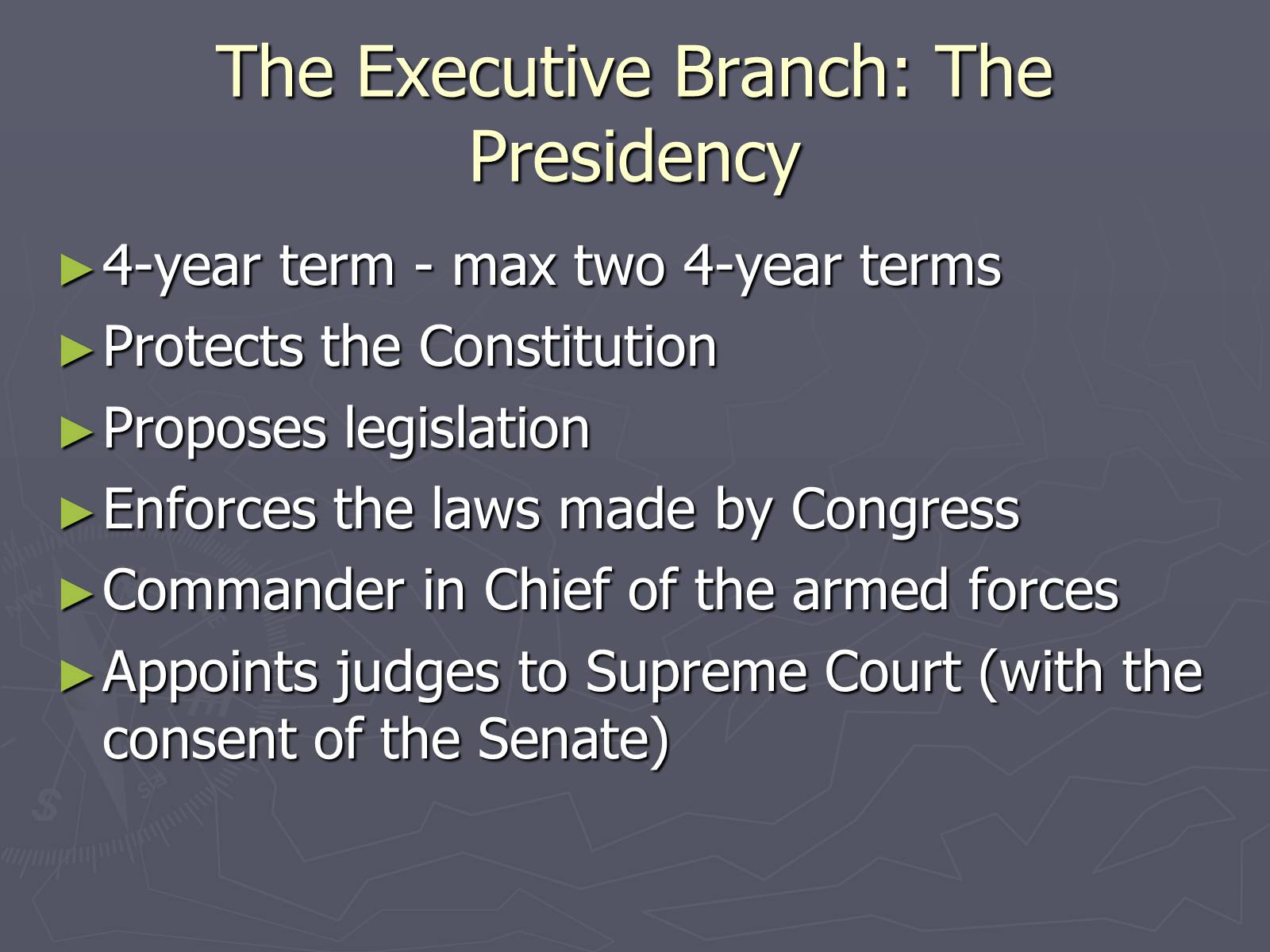Презентація на тему «The American Political System»

The American Political System

Background
The Declaration of Independence 1776
The War of Independence 1776-1783
The American Constitution 1789
Federal government and state govmts.
Division of power
Checks and balances

State and Federal System
Historically state and local government came first.
The states have their own legislative, executive and judicial institutions
State and local government control important areas like:
Highways
State income tax
Public schools and universities
Police and fire departments
Regulate business and supervise commercial affairs
The Federal system of government controls:
Foreign policy, defense and monetary policy
Areas that cannot be regulated locally and statewise: interstate commerce, interstate crime, interstate environmental problems etc.

The Legislative Branch: Congress Passes legislation and appropriates money
The House of Representatives
435 members –according to the size of the state
2-year term
The Senate
100 members -two from each state
6-year term

The Executive Branch: The Presidency
4-year term - max two 4-year terms
Protects the Constitution
Proposes legislation
Enforces the laws made by Congress
Commander in Chief of the armed forces
Appoints judges to Supreme Court (with the consent of the Senate)

The Executive Branch: The Cabinet
No mention of it in the Constitution
Subordinate to the President
Cabinet members recruited broadly, not necessarily party insiders

The Supreme Court
9 members
Life term appointment
Interprets and guards the Constitution
Interprets the law
Decisions of the Supreme Court are final
In general it plays a conservative role, maintaining legal tradition

Checks and Balances
Congress:
Power of the purse
Can override presidential veto
(2/3 majority)
Power of impeachment
Senate approves treaties and
the president's appointments
Supreme Court:
Power to declare laws and
presidential actions
unconstitutional
The President:
Power to veto
Issues executive orders
Commander-in-chief
Appoints Federal Judges
Grants Pardons for offenses
against the US

Elections and Political Parties
Winner-take-all-election system
The Electoral College
Two party system- both appealing to the middle of the political spectrum
Balancing the ticket (President and Vice president)
Voting patterns: splitting the ticket
Voting for individuals rather than party slate

The Electoral College
Representatives of the people in presidential elections
534 electors, corresponding to the numbers of Representatives and Senators
270 electoral votes guarantee the Presidency
Each state votes as a single block (minus Nebraska and Maine) winner takes all
Importance of Swing States and the big states

Democrats and RepublicansAnd Their Voters
Democrats supported by majority of black voters (Clinton 83%)
Urban ethnics
Blue collar workers
Catholics
More women voters
Northeast, upper midwest, northwest, Hawaii
Protestant voters
Business community
White collar workers
Religious fundamentalists

Democrats and Republicans and Their Policies
Democrats
Support welfare programs
Keynesian economics and job creating programs
Social security, Medicare and Medicaid
Civil Rights legislation
Women's right to abortion
Rebublicans
Limiting federal regulation of business
Reduction in welfare spending
Anti-abortion